Use this free Tunisian crochet pattern to make an autumn-inspired, soft and bubbly pillowcase for the pillow that you will never let go of in the cold seasons. I promise!
Contents
How much velvety texture do you need in your life?
If you’re like me, then the answer is “All of it.” and you would not even regret it.
This pillow brings together the velvety softness of baby chenille yarn the textures of bobbles and simple Tunisian crochet stitches.
It’s a delight to touch and hug and pet, so it’s the perfect throw pillow case for your armchair or couch. It’s especially good for sensory seekers who need to touch soft things and yet have a bit of a three-dimensional texture.
Who is the Oak apples pillow for?
Just like other patterns that I’ve created before, this pattern is dedicated to those of us who need sensory input to relax. I made it because I loved the mix between the soft velvet yarn and the absolutely delicious texture of the bobbles.
I made it after trying out the same bobbles for a pumpkin pattern. I loved petting that pumpkin, so I knew I had to have a pillow-sized version (check out that pattern here).
One side is textured, the other one is soft and smooth. You can switch sides that you play with.
Make this as a present to an autistic or otherwise sensory seeking person and you will make their day/month/year. I’m not kidding. I even ended up sleeping for a while on this pillowcase.

Size
The finished pillowcase fits a 50 cm by 50 cm pillow or 19.5 by 19.5 inches, with 5 cm or 2” negative ease (for fluffing up the pillow).
Skill level
Experienced beginner or intermediate, due to popcorn stitches.
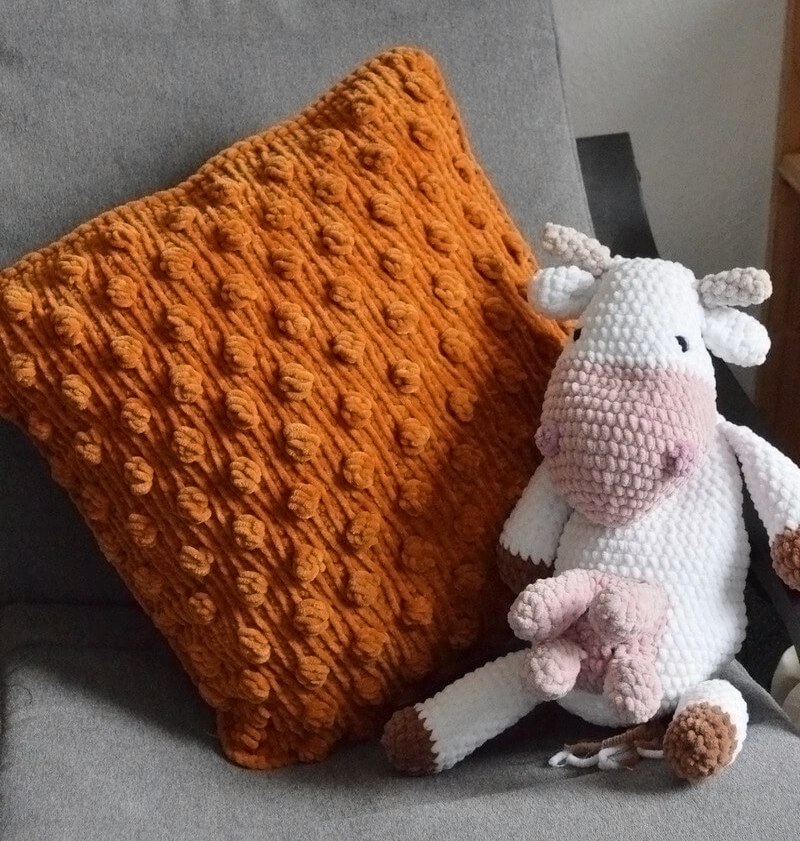
Notions
- Yarn: chenille yarn such as Himalaya Dolphin Baby or an alternative (find yarn substitutes here: https://yarnsub.com/yarns/himalaya_yarn/dolphin_baby); the yarn weight is 6 or super bulky/super chunky, at 120 meters per 100 grams; the recommended hook on the label is 4.5 mm; about 300 grams or 360 meters;
- Hook – 7 mm hook – straight Tunisian crochet hook or hook with a cable;
- Pillow – 50 by 50 cm or 19.5 by 19.5 inches pillow insert;
- Tapestry needle;
- Scissors;
- Optional: 3 pairs of snaps, sewing thread and needle.
Gauge
Make a swatch to ensure that your pillowcase will fit your pillow. The swatch consists of 6 rows of 9Tss (including the last stitch). The resulting rectangle should be 10 cm by 8 cm or about 4 by 3 inches.
Stitches and other abbreviations
Tunisian crochet stitches
- Ch – chain;
- Ls – last stitch – put hook through the 2 vertical loops at the end of the row, YO and pull up a loop;
- Pop – Tunisian popcorn stitch – work 4 extended simple stitches or 4 double stitches in the same stitch; YO and pull through 4 loops on the hook or wait until the return pass, where you YO and pull through 5 loops on the hook when you reach the popcorn stitch;
- R – regular Tunisian return: Ch1, repeat [YO and pull through 2 loops] until 1 loop left on hook;
- Sl St – slip stitch;
- TDs – Tunisian double stitch – YO, insert hook behind vertical bar of next stitch, pull up a loop, YO and pull through 2 loops on the hook;
- Trs – Tunisian reverse stitch – insert hook behind the back vertical bar of the next stitch and pull up a loop;
- Tss – Tunisian simple stitch – insert hook from right to left behind the next vertical bar, YO and pull up a loop;
- YO – yarn-over.
Regular crochet stitches
| US term | UK term | instructions |
| Sc – single crochet | Dc – double crochet | pull up a loop, YO and pull through 2 loops on hook |
Observations
- The pillow is worked in one piece and seamed all around with regular crochet stitches.
- The regular crochet instructions are written both in UK and US terms.
- There are photo instructions for assembly on the last pages of the pattern.
- The abbreviations list includes links to specific Tunisian crochet stitches that you may be unfamiliar with.
Instructions
Row 1. Ch 41, 40 Tss, Ls, R
Row 2. 40 Tss, Ls, R
Repeat Row 2 another 34 times.
Row 37. Ch1, 40 TDs, Ls, R
Row 38. 40 Tss, Ls, R
Row 39. Repeat [3 Tss, 1 Pop] 10 times, Ls, R
Row 40. 40 Tss, Ls, R
Row 41. 40 Tss, Ls, R
Row 42. 1 Tss, repeat [3 Tss, 1 Pop] 9 times, 3 Tss, Ls, R
Row 43. 40 Tss, Ls, R
Repeat Rows 38-43 another 5 times.
Row 74. Ch1, 40 TDs, Ls, R
Row 75. 40 Tss, Ls, R
Repeat Row 75 4 more times.
Row 80. 40 TRs, Ls, R
Add more rows if you want the flap to be longer.
Cast off by making slip stitches in the back vertical loops of the stitches, as if to make TRs, but instead of keeping the loops on the hook, you slip them.
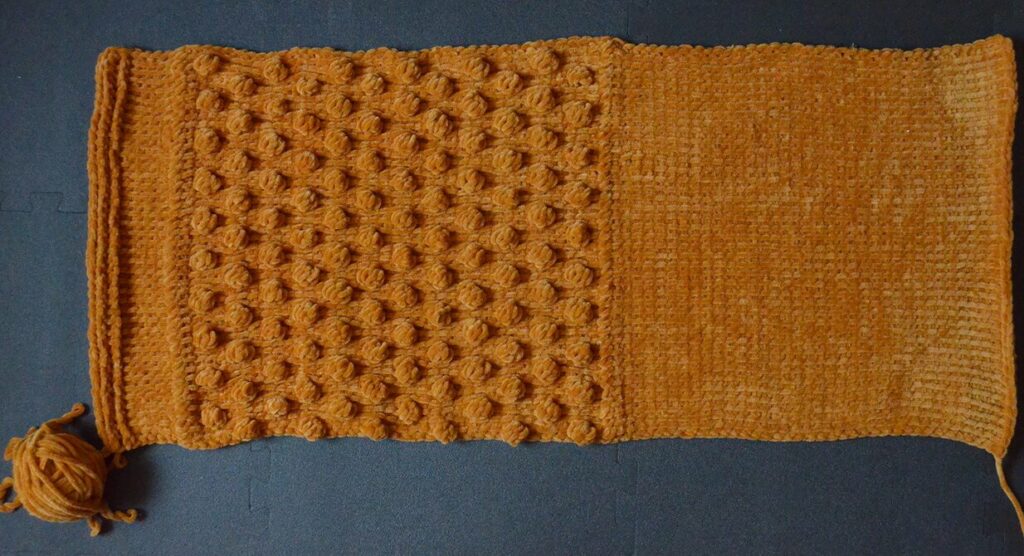
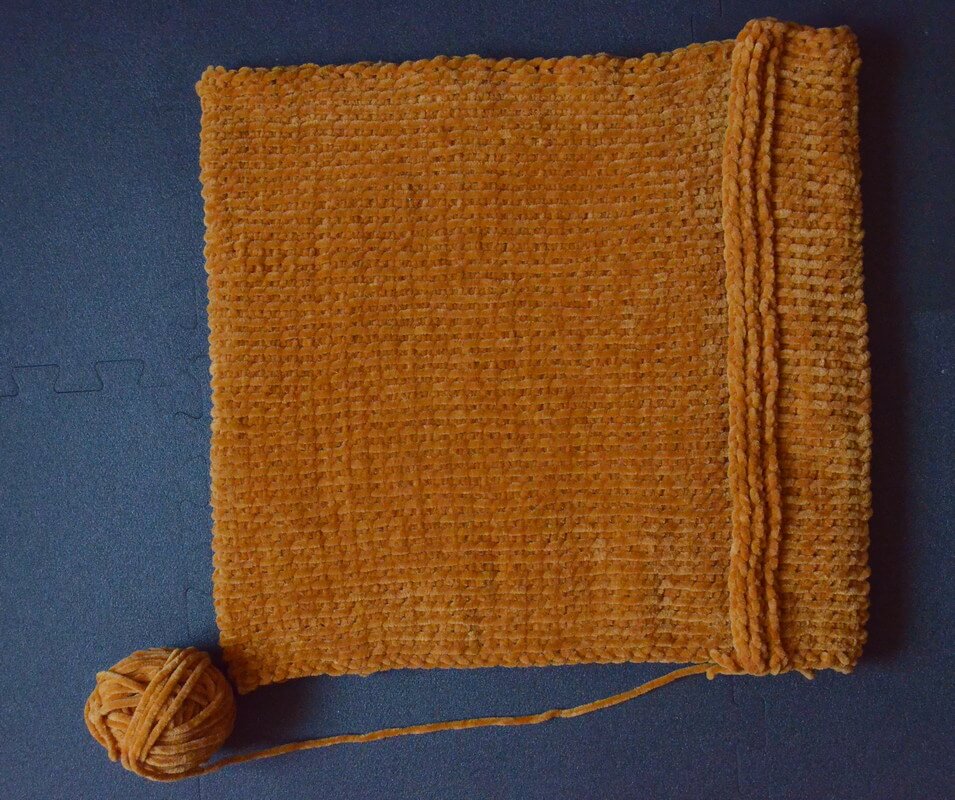
Do not cut the yarn once you reach the end of the row, as you will use it to seam up the pillowcase.
Weave in any ends that you have from adding yarn, making sure they can’t worm out (work over at least 5 cm forwards and backwards 3 times).
Fold up the piece along the two rows of double stitches. Use safety pins to keep the layers in place until you finish the assembly. Using the same hook, make Sc stitches around the edge of the pillowcase, going through either 2 or 3 layers, picking up both loops of each stitch.
When you reach the edge with double stitches, make Sc stitches in the horizontal loop between the stitches.
This will create a beautiful edge along all the sides of the pillow.

When you reach a corner, make 1Sc, Ch1, 1Sc in the same corner spot.
When you reach back to the beginning, all around the pillowcase, cut off the yarn and make an invisible join, then weave in the last end.
Optionally, sew three pairs of snaps, spaced 10 stitches apart, to keep the pillowcase closed.
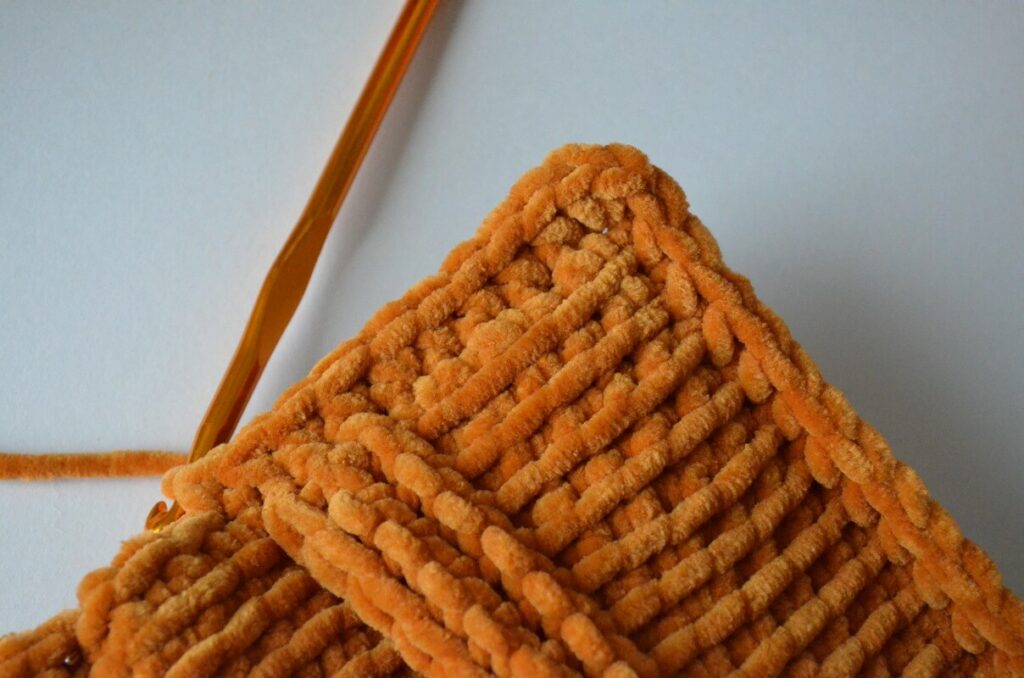
Sew each snap side 10 stitches apart from the others and from the edges, like in the image.
The snaps on the bottom are sewn on row 6 and the snaps on the top on row 80.
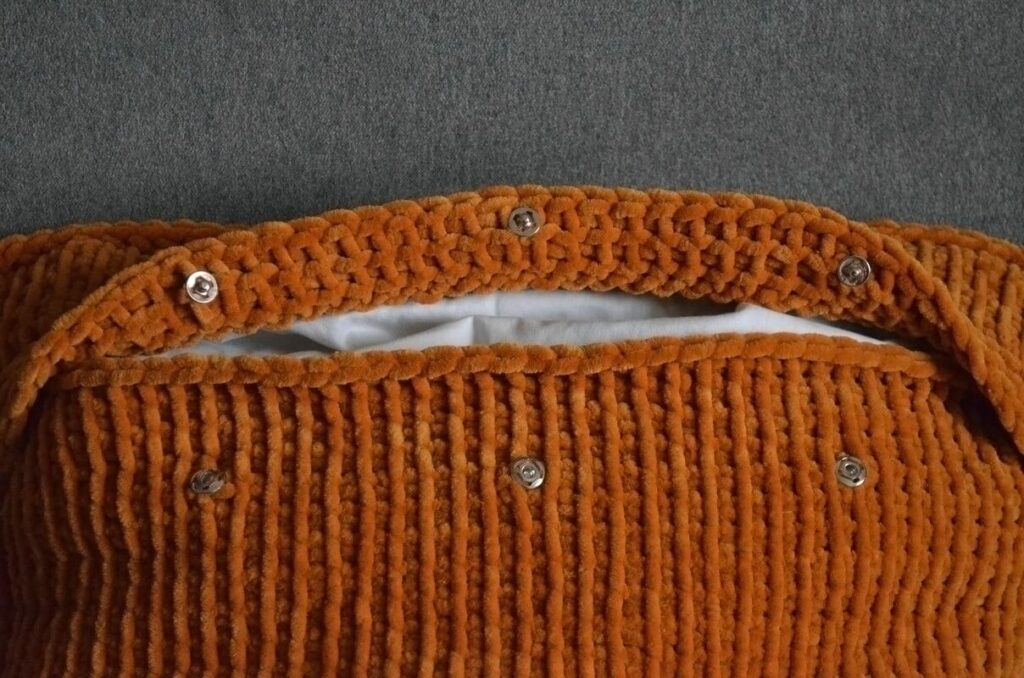
Now your pillowcase should be finished and you can insert the pillow. It should fit snuggly and make the pillow fluff up.
Video for the Tunisian crochet bobble stitches
You can also follow along with the video tutorial, if you prefer it. Click on the thumbnail to follow along with the tutorial.
Final thoughts
If you like this pattern for a Tunisian crochet pillow and would like to support me in creating more patterns, please consider buying a PDF copy from the product page (or from Payhip, Etsy or Ravelry).
If you use Ravelry, you can add it to your project queue or make a project page and link it with the pattern page, so I can see what you make.
Keep close and sign up to my emails if you haven’t already (you’ll get a nice pattern too).
If you want more Tunisian crochet patterns, check these out:
Corner to corner Tunisian crochet scarf pattern
Nordic star Tunisian crochet baby blanket pattern
Tunisian crochet cat ear beanie free pattern
Free wavy mosaic Tunisian crochet pattern
Feather and fan Tunisian crochet pattern for a washcloth
Tunisian crochet asymmetrical rounded triangle shawl tutorial
How to start a Tunisian crochet project in a magic ring
How to make different shawl shapes in Tunisian crochet
How to sew Tunisian knit stitch row to row
How to make a Tunisian crochet mosaic bee potholder
I’ll see you soon.
Hugs,
Andrea
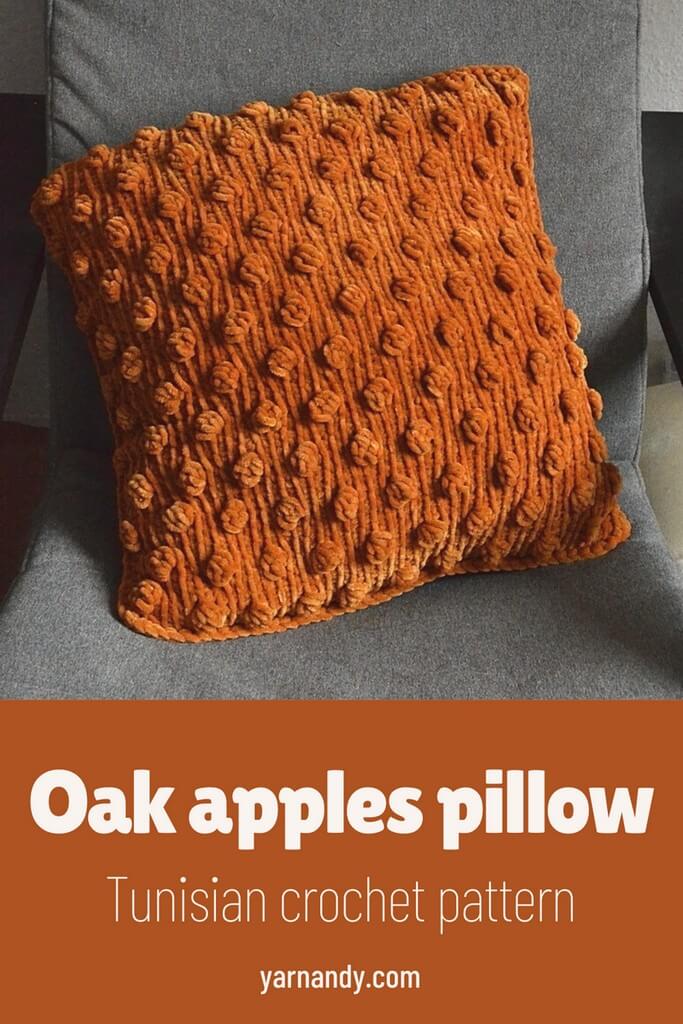





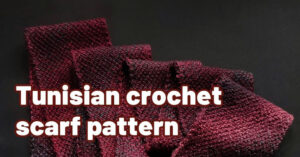

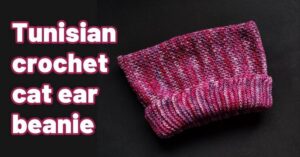



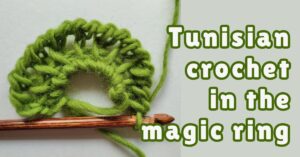
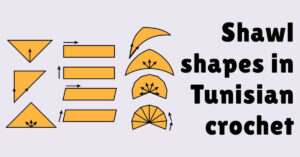
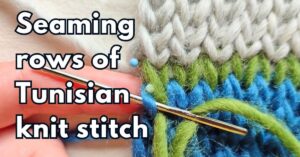


Hi. Thank you for sharing your work! I look forward to making this pillow. Exactly what color of Himalayan Dolphin Baby did you use? Thank you.
Dear Camille,
Thank you for your comment! For this particular pillow cover, I used a yarn called “Chenille Baby”, which is exactly like Himalaya Dolphin Baby and might even be made in the same factory, who knows.
I couldn’t find a yarn listing at the time I wrote the pattern because of the name of the yarn (it’s extremely generic) and because there’s no producer mentioned on the label, but using Google Lens now I did find a shop that sells this yarn. You may find some others as well.
The color I used is 100-28. Hope this helps!
Hugs,
Andrea
Thank you, Andrea, for your quick and thorough reply! I would also love to make a throw blanket using this tunisian bobble pattern. Do you think I could adapt your pattern to make a blanket…maybe do a chain of 120 +1 and just do rows 37-43 until it is as long as I want? Or is there something that I am missing that this wouldn’t work? Again, thank you for sharing your talents!
Sorry, I also meant to ask if you used extended simple stitches or double stitches for your bobbles in the pillow that is pictured?
I didn’t see your replies there, sorry for that. I honestly don’t remember which type of bobble I used.
I think extended, I just looked at the pillow. Maybe try both versions and see which one is easier for you to make and you like more.
As for a blanket, you need a multiple of 4 stitches + 1 for the Ls and one extra loop on the hook for the first stitch. You can choose how many based on your gauge and desired blanket size.
You’d repeat rows 37-42, but now I notice there’s a mistake in row 42, there should be a 3 Tss at the end there. Oops. I’ll update the PDF too, but I just did an update in the pattern as well.
Hope this helps!
Andrea
As an autistic person, I really appreciate the way you describe the sensory aspect of this pattern! I’m looking forward to getting started (my yarn is hopefully arriving in the next couple days), but looking through the pattern I have a couple of questions.
You use the abbreviations TRs and TDs which aren’t listed in the abbreviation list but I’m assuming are Tunisian reverse stitch and Tunisian double stitch, but I wanted to make sure, especially because I’m still pretty new to Tunisian crochet.
For the regular crochet stitch section, you list US single crochet but describe US double crochet (I’m pretty sure), which one is used in the pattern? I’m primarily a knitter (who fell in love with Tunisian crochet after taking a class last month), so my ability to “read” crocheted stitches by sight is very low.
Thanks for making this pattern! I’m really looking forward to making this.
Dear Eli,
Thanks for your comment and the feedback! I fixed the errors, the two terms were missing and the instructions for the Sc were wrong.
Thank you for your patience and I hope you enjoy the pattern now. I’m off to update the PDF.
Hugs,
Andrea
Thanks so much for the fast reply! My yarn is listed as “out for delivery” so hopefully I’ll be able to get started this evening.
Yay for squishy mail!
By the way, which yarn did you choose? Some velvet yarns are known for “worming”, the stitches become loose and the yarn “worms” around making large loops because it’s slippery.
Other yarns are sticky, like the one I regularly use and recommend in my patterns.
If that happens, you need to decrease the hook size and adjust the number of stitches, but you can also try working from the other end of the ball (I just thought of this, if you have any velvet pants you know how the pile of the velvet needs to be directed in a specific way so the pants don’t ride up).
I’m using Hobbii baby snuggle, which was listed as an “excellent match” for the one you used. I had some issues with gauge, I ended up going up a couple sizes to get close to your gauge, but I’m still happy with the feel of the fabric. I’m worried it may still come out small, but if I can’t get the pillow form in, I’ll probably just buy a smaller pillow form to make it work. Over all I haven’t had any issues with the yarn itself, except that finding both legs of the last stitch has been very hard sometimes.
I just finished the big tss part, and I’ve started on the tds row, but I have a question about the last stitch. Is it a completely normal last stitch, or do I need to work it like the double stitches or add another chain on the return pass to keep it at the same height?
Thank you so much for your help, I’ve also posted a picture of my progress so far on my ravelry project page (username elirys)